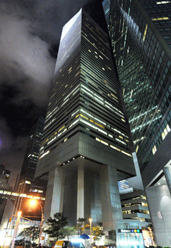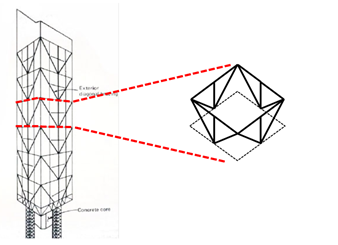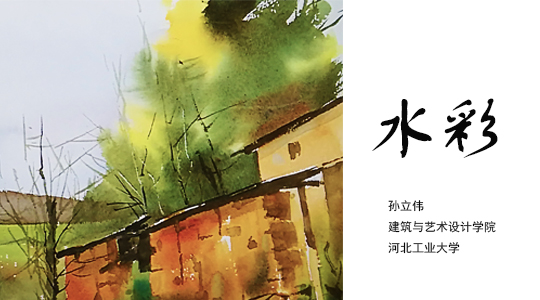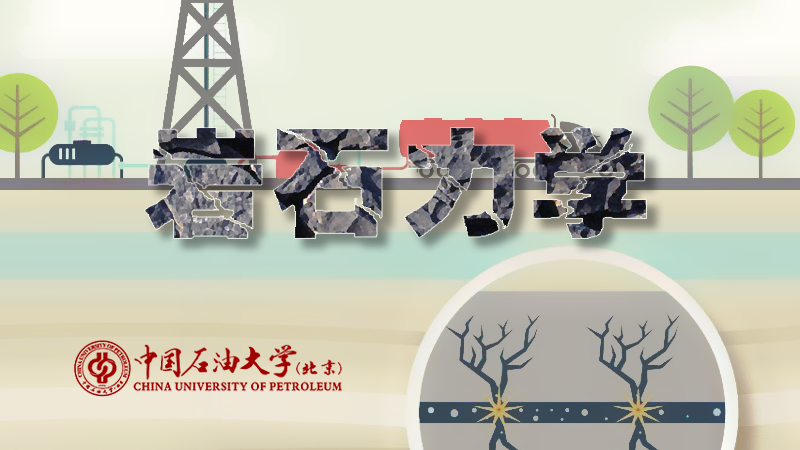
当前课程知识点:Structural Mechanics > 讨论题 Discussion Question > Discussion Question-Social responsibility of engineers > Discussion Question-Social responsibility of engineers
返回《Structural Mechanics》慕课在线视频课程列表
Please read the following article and share your thoughts:
Social responsibility of engineers
In a city of skyscrapers of nearly every shape and size, the Citigroup Center on Lexington Avenue is one of New York’s most unique. Resting on four stilts perfectly centered on each side. The original structure responsible for these striking features also contained a grave oversight that nearly resulted in structural catastrophe.
In the early 1960s, Citicorp’s headquarters became too small for the company’s ongoing growth and expansion. So it spent about $40 million to acquire all of the St. Peter’s Lutheran Church was selling, but the new building could not have any structure across the church.This meant that the entire building would need to hover above the church, nine stories above street level, presumably by placing it on piers. More importantly, preserving the church meant that none of the supports could be located at the corners of the lot, resulting in a design that moved the columns to the middle of each profile. Upon its completion in 1977, the Citigroup Center became the seventh tallest building in the world.
Most of the credit for the project is generally given to its structural engineer, William Le Messurier. Working on an enormous scale with an unprecedented massing configuration, the task of inventing a structural system to support this unusual design fell squarely on his shoulders. Le Messurier devised a V-shaped system of braces that spanned the building in eight-story units, resulting in five sets of inverted chevron-like supports. In textbook diagrammatic form, these braces redirect the downward forces of the building toward its center where the load-bearing piers transfer them to the ground, all the while providing resistance to the horizontal forces generated by the wind.


Shortly after construction was finished, Diane Hartley, an undergraduate architecture student at Princeton, attempted to mathematically replicate the performance figures of the building. When she calculated the force of wind applied directly to the side of the tower, the structure had no problem offsetting it. However, she went a critical step further, calculating the effect of quartering winds—that is, winds that strike the building from two sides simultaneously—and found that above a certain windspeed, the joints of the building would buckle and catastrophic failure was imminent. She phoned Le Messurier’s office to find out where the figures had gone off. Fortunately, Le Messurier decided to look into the student’s questions.
The survey found that a late-stage cost-cutting measure that substituted fully welded joints in the spliced diagonal braces for bolted joints resulted in insufficient strength to withstand the quartering winds, and given the wrong combination of forces, the building could eventually collapse. In other words, Hartley’s figures were correct
Le Messurier quickly handed the figures to several meteorological experts to determine how frequently the wind speeds necessary for structural failure occurred in New York. The answer was sickening: every fifty-four years, they said, unless a storm cut off power to the tuned mass damper, which would reduce the frequency of potentially catastrophic storms to a mere sixteen years.
On hearing the news, LeMessurier thought about staying silent and committing suicide, but LeMessurier chose the third option, saving the building. "I had information that no one else in the world had," LeMessurier recalls. "I have the power in my hands to achieve extraordinary events that only I can initiate."
Le Messurier hurriedly contacted the executives at Citigroup to let them know that their brand new, $175 million icon could easily become the greatest disaster in New York's history. Together, they hatched a plan to superimpose fully welded steel plates over the weak joints on the braces, and began fortifying the building around the clock while keeping a watchful eye on the weather forecast.
During the repairs, the weather center received the news everyone had feared -- a major storm: Hurricane Ella, bearing down on New York. It had winds of 125 miles per hour and was a Category 4 hurricane at its peak. "No one dared say, 'We might hit the emergency button,'" LeMessurier recalled. The emergency button means more than 200,000 people may need to evacuate. "No one dares say that. But everyone is bleeding from the bottom of their hearts." Luckily, as it neared New York, it miraculously changed course and headed unexpectedly deep out to sea.
In the end, restoring was completed, and the building became one of the safest skyscrapers in New York City, able to withstand a once-in-700-year storm without the help of dampers.
Diane Hartley certainly deserves much credit for starting the incredible chain of events that may ultimately have saved thousands of lives. But her discovery would have never made a difference if it was not for LeMessurier’s willingness to consider what others questioned. LeMessurier listened to the thoughts of an unknown college engineering student and intellectual curiosity and inquisitive nature prevented him from completely disregarding the student’s inquiry. Instead LeMessurier considered the message from the student.
LeMessurier’s acts highlight the importance associated with constantly questioning and re-examining past decisions in light of new information or ideas. Design professionals must be open to other ideas, perspectives and criticisms while avoiding a “stubborn attachment to existing beliefs.”
Just as the words of William LeMessurier to his students at Harvard: “You have a social obligation. In return for getting a license and being regarded with respect, you’re supposed to be self-sacrificing and look beyond the interests of yourself and your client to society as a whole. And the most wonderful part of my story is that when I did it, nothing bad happened. ”
(内容来源:
https://www.archdaily.com/564014/ad-classics-citigroup-center-hugh-stubbins-william-le-messurier
返回《Structural Mechanics》慕课在线视频列表
-1.1 Structures and structural mechanics
--Video
-1.2 Computing models and principles
--Video
-1.3 Classification of framed structures
--Video
-1.4 Classification of loads
--公告
-Courseware
-2.1 Basic concepts
--2.1 Purpose of geometric construction analysis
--2.2 Geometrically table and unstable systems
--2.3 Degrees of freedom and constraints-1
--2.4 Degrees of freedom and constraints-2
-2.2 The Calculating Degrees of Freedom
--2.5 Calculating DOF and two formulae
--2.6 Examples for calculating DOF
--2.7 Necessary condition of geometrically stable systems
-2.3 Geometric Construction Rules
--2.8 Geometric construction rules based on hinged triangle
--2.9 Restrictions of geometric construction rules
--2.10 Application of Geometric Construction Rules
--2.11 Discussion of virtual hinges at infinite distance
-2.4 Relationship between Geometric Construction and Equilibrium Equations
--2.12 Relationship between geometric constructions and equilibrium equations
-Courseware
-Unit testing
--Chapter 2 Geometric Constru...
-3.1 Review the analysis of single span beams
--3.1 Review of the analysis of single span beams-1
--3.2 Review of the analysis of single span beams-2
-3.2 Construction of internal force diagrams by principle of superposition
--3.3 Construction of bending moment diagrams by principle of superposition
--3.4 Construction of shear force diagrams and solution of reactions
--3.5 The analysis of simply supported inclined beams
-3.3 Analysis of statically determinate multi-span beams
--3.6 Geometric construction and characteristic of statically determinate multi-span beams
--3.7 Calculation of internal forces for statically determinate multi-span beams-1
--3.8 Calculation of internal forces for statically determinate multi-span beams-2
--3.9 Comparison of three types of beams
-Courseware
-4.1 Classification and characteristic of plane statically determinate rigid frames
--4.1 Classification and characteristic of plane statically determinate rigid frames
-4.2 Calculation of statically determinate plane frames
--4.2 Calculation of reactions for statically determinate plane frames
--4.3 Construction of M diagram for frames-1
--4.4 Construction of M diagram for frames-2
--4.5 Construction of shear force diagrams and axial force diagrams for frames
-Courseware
-Unit testing
--Unit texting
-5.1 Classification and characteristic of plane arches
--5.1 Classification and characteristic of plane arches
-5.2 Calculation of flat arches
--5.2 Calculation of flat arches-1
--5.3 Calculation of flat arches-2
-5.3 Calculation of arches with ties
--5.4 Calculation of arches with tie and oblique arches
-5.4 Rational axial line
--5.5 Rational axial line of flat arches
-Courseware
-6.1 Calculation of trusses
--6.1 Assumptions and classification of determinate plane trusses
--6.2 Calculation of internal forces by the method of joints
--6.3 The method of axial force coefficients
--6.7 Qualitative analysis of several trusses
-6.2 Calculation of composite structures
--6.8 Calculation of internal forces for composite structures
-Unit testing
-Courseware
-7.1 General remarks on statically determinate structures
--7.1 General remarks on statically determinate structures
-7.2 Principle of virtual work for rigid bodies
--7.2 Principle of virtual work for rigid bodies
--7.3 The method of unit virtual displacement
-Unit testing
--Chapter 7-Unit testing
-8.1 Introduction
--8.1 Introduction for calculation of structural displacement
-8.2 Calculation of displacements for rigid body systems
--8.2 The method of unit virtual load
-8.3 Principle of virtual work for deformable bodies and general equation of displacements
--8.3 The principle of virtual work for deformable bodies and appropriate conditions
--8.4 The general equation of displacements
-8.4 Displacements calculation of various types of structures due to external loads
--8.5 Formula for calculating displacements caused by loads
--8.6 Displacement calculation of various types of structures due to external loads-1
--8.7 Displacement calculation of various types of structures due to external loads-2
--8.8 Discussion on beam-typed members-1
--8.9 Discussion on beam-typed members-2
--8.4-Unit testing
-8.5 The graph-multiplication method
--8.10 The graph-multiplication method
-8.6 Calculation of displacements caused by other factors
--8.11 Calculation of strains caused by temperature changes
--8.12 Calculation of displacements caused by temperature changes
--8.13 Calculation of displacements caused by support movement and manufacture error
--8.14 Calculation of generalized displacements
--8.6-Unit testing
-8.7 Reciprocal laws for linear elastic system
--8.15 Reciprocal laws for linear elastic systems
--8.16 Application of the law of reciprocal work-1
--8.17 Application of the law of reciprocal work-2
--8.7-Unit testing
-Midterm Exam
-9.1 Determination of degrees of indeterminacy
--9.1 Determination of degrees of indeterminacy
-9.2 Basic concepts of force method
--9.2 Basic idea of force method
--9.3 Canonical equations for structures with n degrees of indeterminacy
-9.3 Calculation of internal forces for statically indeterminate beams, rigid frames and bent frames
--9.4 Calculation of internal forces for statically indeterminate beams under the action of loads
--9.5 Calculation of internal forces for statically indeterminate rigid frames and bent frames under t
-Unit testing-1
-9.4 Calculation of internal forces for statically indeterminate trusses and composite structures
--9.6 Calculation of internal forces for statically indeterminate trusses under the action of loads
--9.7 Calculation of internal forces for statically indeterminate composite structures under the actio
-Unit testing-2
-9.5 Calculation of statically indeterminate structures cause by other factors
--9.8 Calculation of internal forces for statically indeterminate structures due to temperature change
--9.9 Calculation of internal forces for statically indeterminate structures due to support settlement
-9.6 Calculation of symmetric structures
--9.10 No bending moment status
--9.11 Symmetry of structures and loadings
--9.12 Characteristic of symmetric structures
--9.13 Simplification of symmetric structures
-Unit testing-3
-10.1 Basic concepts of displacement method
--10.1 Basic concepts of displacement method
--10.2 Basic idea of displacement method
-10.2 Primary unknowns of displacement method
--10.3 Primary unknowns of displacement method
-Unit testing-1
-10.3 Slope-deflection equations of uniform beams
--10.4 Slope-deflection equations of uniform beams
-10.4 The primary methods
--10.5 The method of equilibrium equations
--10.6 The method of typical equations
-Unit testing-2
-10.5 Analysis of structures without sidesway due to external loads
--10.7 Analysis of structures without sidesway due to external loads
-10.6 Analysis of structures with sidesway due to external loads
--Analysis of structures with sidesway due to external loads
-Unit testing-3
-11.1 Basic concepts of moment distribution method
--11.1 Displacement method and moment distribution method
--11.2 Basic concepts of moment distribution method
--11.3 Application of moment distribution at a single joint
-11.2 Moment distribution at multi-joints
--11.4 Moment distribution at multi-joints
--11.5 Application of moment distribution at multi-joints-1
--11.6 Application of moment distribution at multi-joints-2
-11.3 No-shear moment distribution method
--11.7 Application condition of no-shear moment distribution method and determination of fixed-end mom
--11.8 Determination of stiffness factors, distribution factors and carryover factors
--11.9 Application of no-shear moment distribution method






